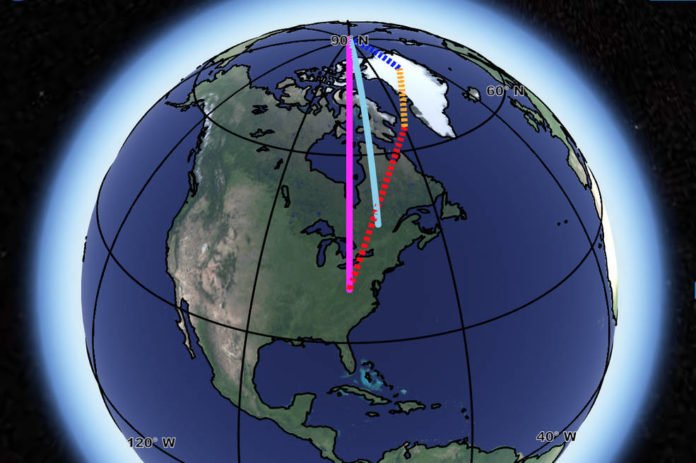When Earth rotates on its spin axis – an imaginary line that goes through the North and South Poles – it drifts and wobbles. These spin axis movements are logically alluded to as “polar motion.” Measurements for the twentieth century demonstrate that the spin axis floated around 4 inches (10 centimeters) every year. Through the span of a century, that turns out to be in excess of 11 yards (10 meters).
Now, for the first time, NASA scientists have identified three broadly-categorized processes responsible for this drift. For this, they took help of observational and model-based data spanning the entire 20th century.
First author Surendra Adhikari of NASA’s Jet Propulsion Laboratory in Pasadena, California said, “The traditional explanation is that one process, glacial rebound, is responsible for this motion of Earth’s spin axis. But recently, many researchers have speculated that other processes could have potentially large effects on it as well. We assembled models for a suite of processes that are thought to be important for driving the motion of the spin axis. We identified not one but three sets of processes that are crucial — and melting of the global cryosphere (especially Greenland) over the course of the 20th century is one of them.”
The redistribution of mass on and within Earth, like changes to the land, ice sheets, oceans, and mantle flow affects the planet’s rotation.
As temperatures increased all through the twentieth century, Greenland’s ice mass diminished. Truth be told, an aggregate of around 7,500 gigatons – the weight of in excess of 20 million Empire State Buildings – of Greenland’s ice melted into the ocean amid this period. This makes Greenland one of the best contributors of mass being transferred to the oceans, causing ocean level to rise and, thusly, a drift in Earth’s spin axis. While ice melt is occurring in other places (like Antarctica), Greenland’s location makes it a more significant contributor to polar motion.
Coauthor Eric Ivins, also of JPL said, “There is a geometrical effect that if you have a mass that is 45 degrees from the North Pole — which Greenland is — or from the South Pole (like Patagonian glaciers), it will have a bigger impact on shifting Earth’s spin axis than a mass that is right near the Pole.”
The authors argue that mantle convection makes up the final third. Mantle convection is responsible for the movement of tectonic plates on Earth’s surface. It is basically the circulation of material in the mantle caused by heat from Earth’s core. Ivins describes it as similar to a pot of soup placed on the stove. As the pot, or mantle, heats, the pieces of the soup begin to rise and fall, essentially forming a vertical circulation pattern — just like the rocks moving through Earth’s mantle.
With these three wide broad contributors, researchers can recognize mass changes and polar motion caused by long-term Earth process over which we have little control from those caused by environmental change. They currently realize that if Greenland’s ice loss quickens, polar motion likely will, as well.
The paper is published in the Earth and Planetary Science Letters. Besides JPL, coauthor institutions include the German Research Centre for Geosciences, Potsdam; the University of Oslo, Norway; Technical University of Denmark, Kongens Lyngby; the Geological Survey of Denmark and Greenland, Copenhagen, Denmark; and the University of Bremen, Germany.
